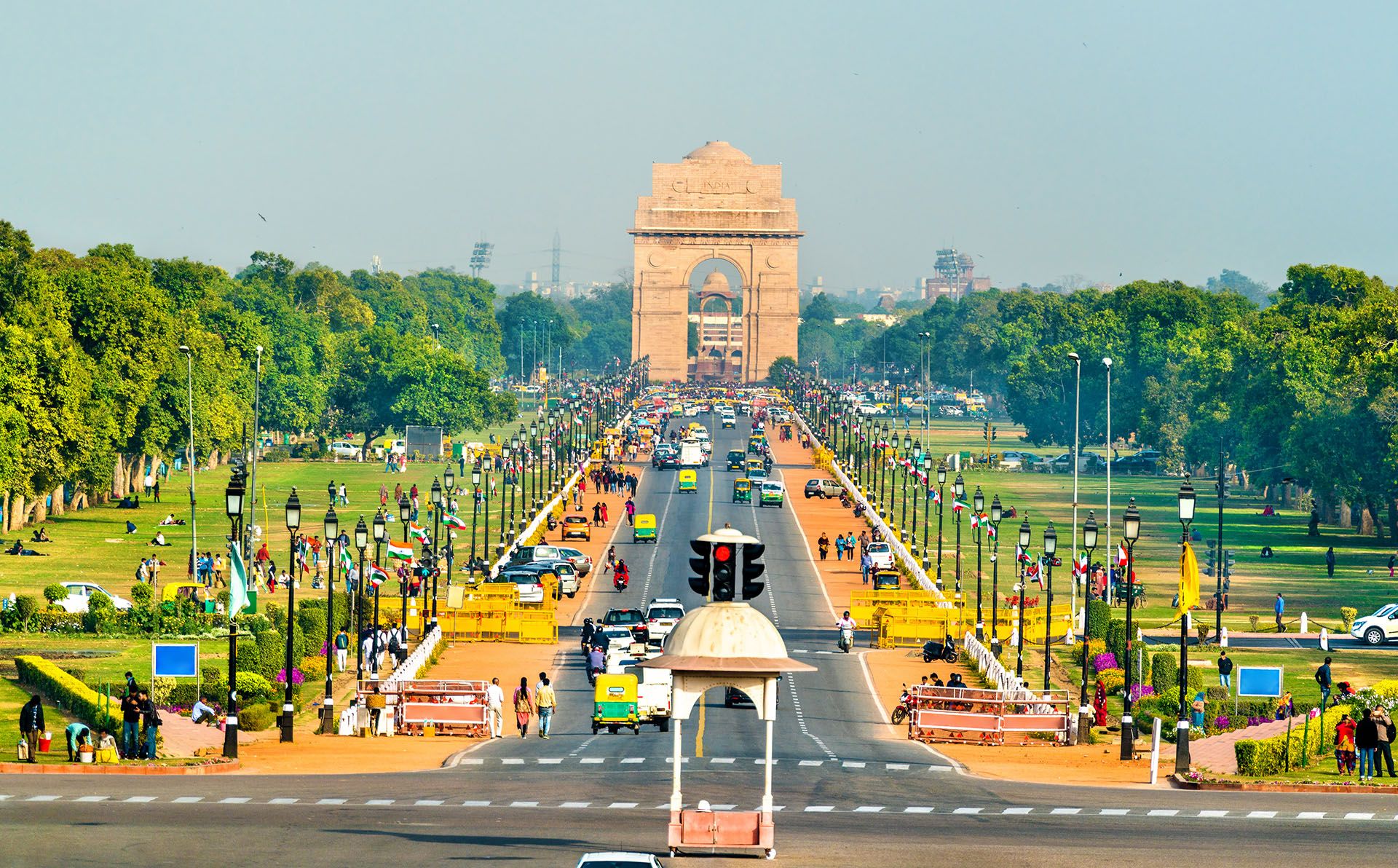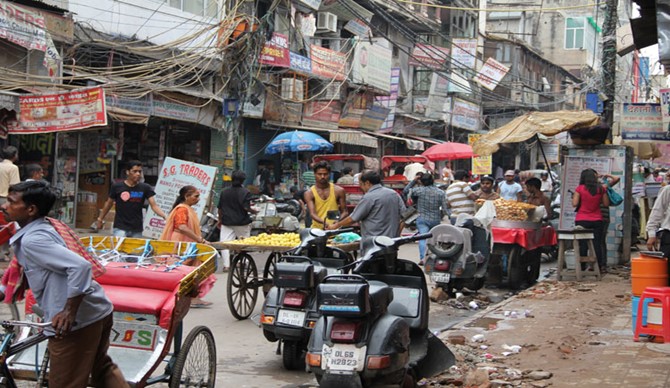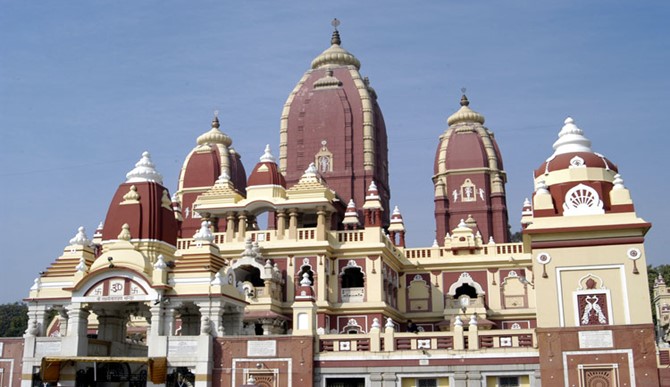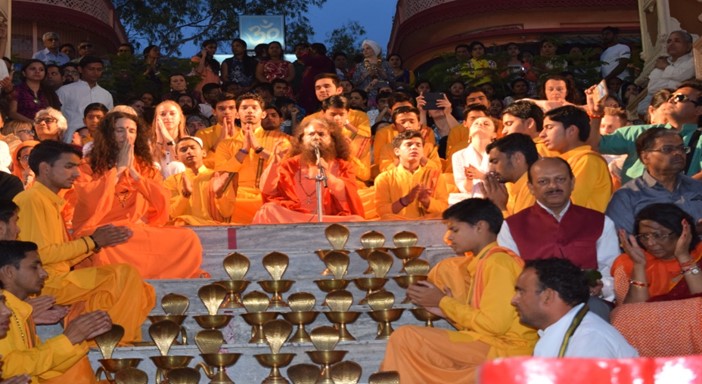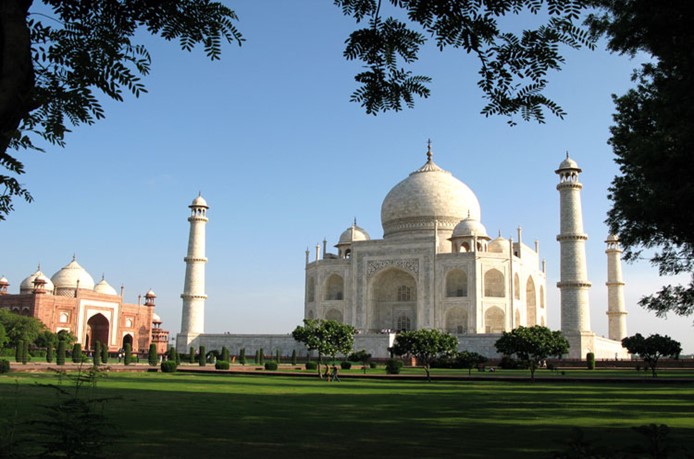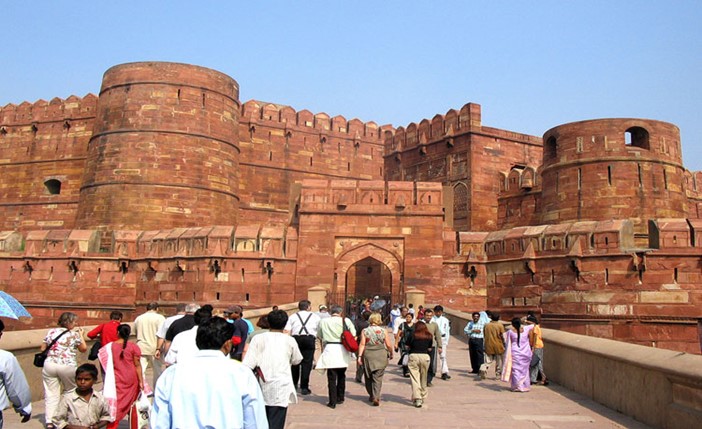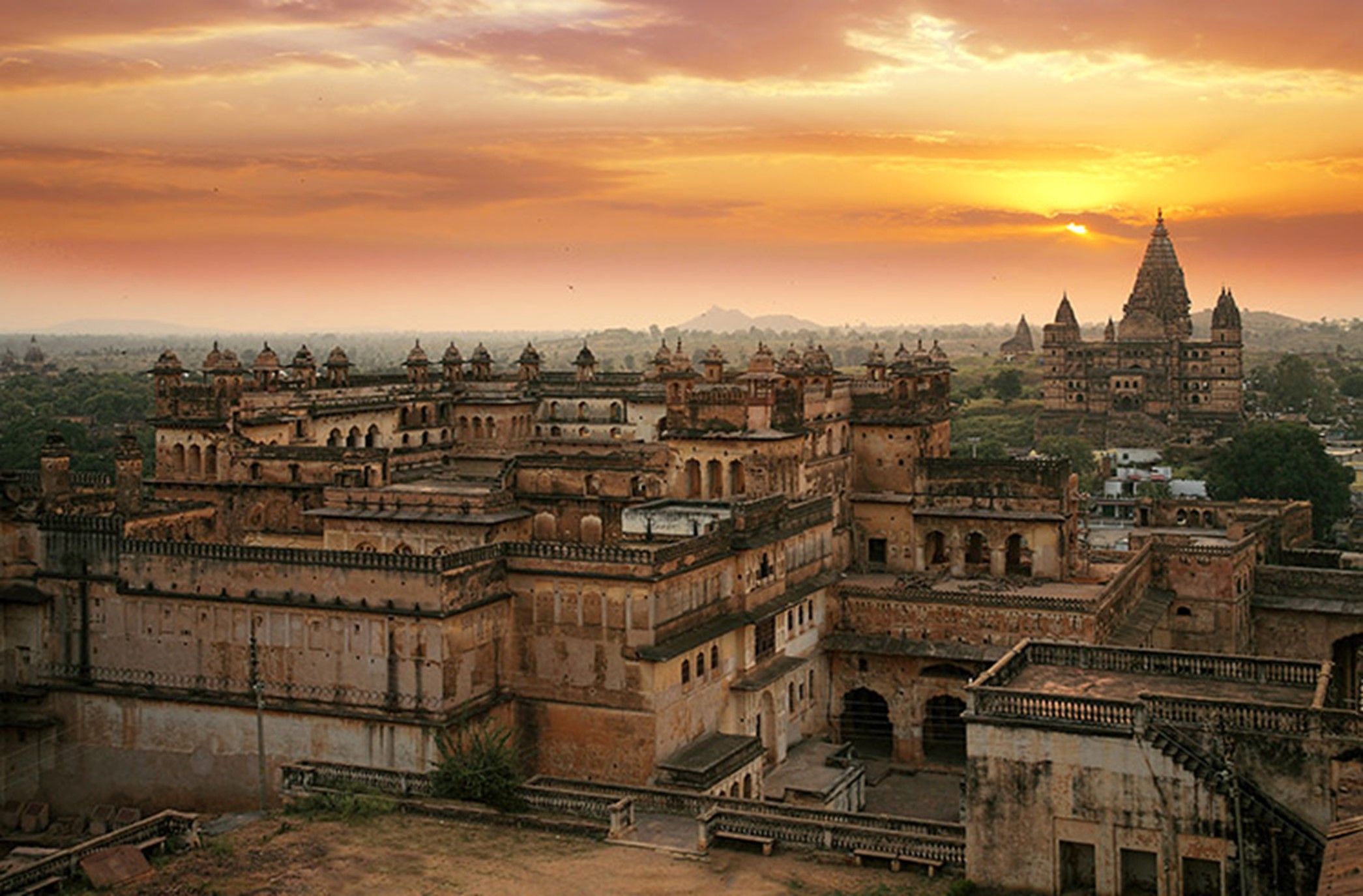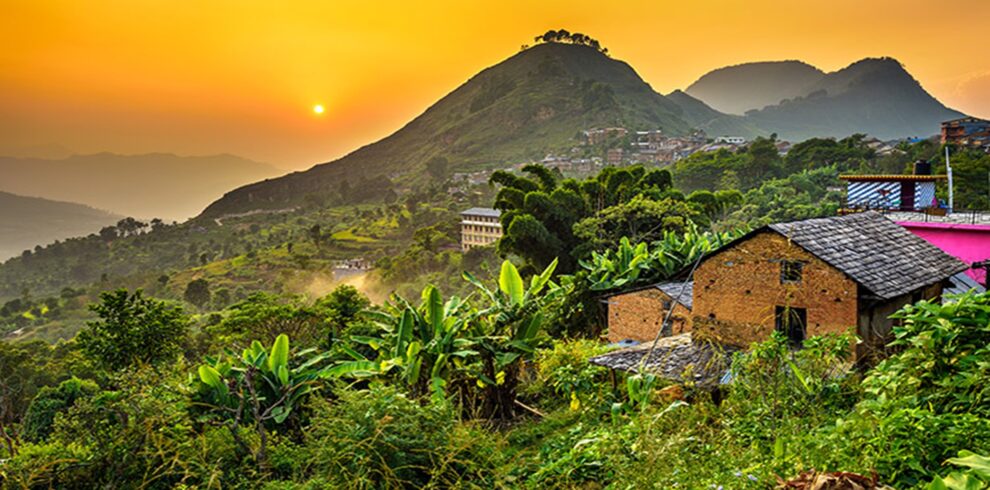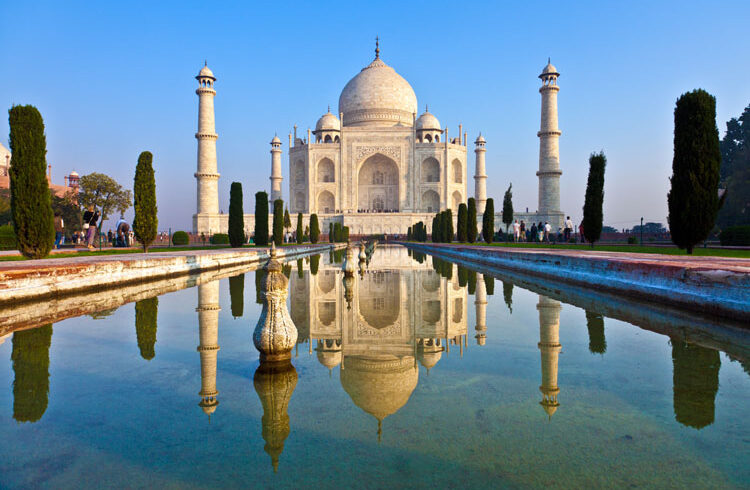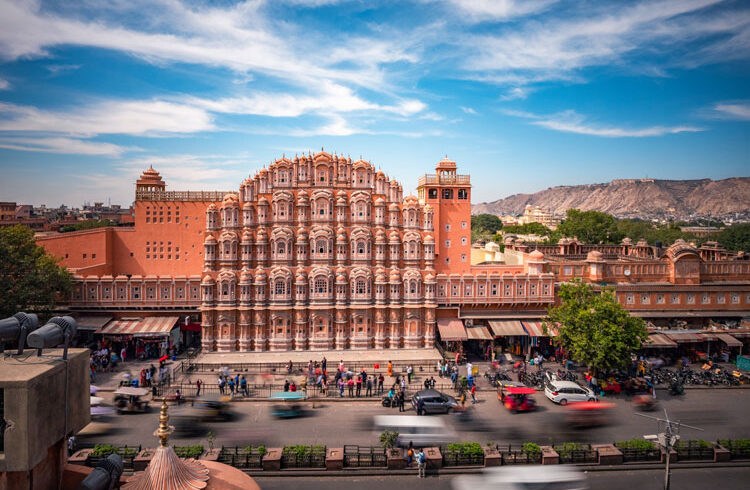India’s Timeless Treasures: A Journey from Delhi to Kolkata” is a captivating travelogue that takes readers on a historical and cultural exploration of two of India’s most iconic cities.
The book delves into Delhi’s rich heritage, showcasing its magnificent monuments, vibrant markets, and diverse cultural tapestry. From the grandeur of the Red Fort to the serenity of Humayun’s Tomb, readers are transported back in time to witness the splendor of the Mughal Empire.
The journey then continues to Kolkata, a city steeped in colonial history and artistic expression. The book explores the city’s architectural marvels, such as the Victoria Memorial and the Howrah Bridge, as well as its thriving literary and artistic scene. Readers are introduced to the city’s vibrant street life, its delectable cuisine, and its passionate love for music and theater.
Through vivid descriptions and stunning photographs, the book captures the essence of these two cities, highlighting their unique contributions to India’s cultural heritage. It is a must-read for anyone seeking to immerse themselves in the timeless beauty and historical significance of India.
Overview
India’s Timeless Treasures: A Journey from Delhi to Kolkata” is a captivating travelogue that takes readers on a historical and cultural exploration of two of India’s most iconic cities.
The book delves into Delhi’s rich heritage, showcasing its magnificent monuments, vibrant markets, and diverse cultural tapestry. From the grandeur of the Red Fort to the serenity of Humayun’s Tomb, readers are transported back in time to witness the splendor of the Mughal Empire.
The journey then continues to Kolkata, a city steeped in colonial history and artistic expression. The book explores the city’s architectural marvels, such as the Victoria Memorial and the Howrah Bridge, as well as its thriving literary and artistic scene. Readers are introduced to the city’s vibrant street life, its delectable cuisine, and its passionate love for music and theater.
Through vivid descriptions and stunning photographs, the book captures the essence of these two cities, highlighting their unique contributions to India’s cultural heritage. It is a must-read for anyone seeking to immerse themselves in the timeless beauty and historical significance of India.
Highlights
- Rickshaw Ride in Old Delhi
- Drive past the Govt. Buildings
- Yoga Session in the hotel
- Parmarth Niketan to enjoy the spiritual Evening Aarti
- Evening Ceremony at Ram Raja Temple
- Evening enjoys boat ride at Sangam Prayagraj
- Enjoy cultural performance onboard
- Interact with villagers in Baranagar
- Dinner & Overnight on Cruise
Itinerary
Arrive Delhi. On arrival, you will be greeted and assisted by our representative and transferred to the hotel.
(Check in time 1400 hrs)
Delhi has been the seat of power of several empires for about a millennium. It has been destroyed and rebuilt many
times, and interestingly, a number of its destroyers have also been its rulers. Delhi today is a potpourri of two distinct cultural lineages—Old Delhi and New Delhi. Juxtaposed against the immaculately planned New Delhi created by the British Raj, Old Delhi, which was once the capital of Islamic India, is a labyrinthine network of lanes and by lanes with crumbling havelis and formidable mosques.
Overnight at hotel
After breakfast proceed for visit of Delhi including following:
Red Fort (from outside)
Red Fort is the fifth Mughal Emperor Shah Jahan's elegant citadel in red sandstone, built on the western bank of the River Yamuna. Shah Jahan started the construction of this massive fort in 1638, when he decided to shift his capital from Agra to Delhi.. IMP: It remains closed on Mondays.
Jama Masjid
This great mosque of Old Delhi is the largest in India, with a courtyard capable of holding 25,000 devotees. It was begun in 1644 and ended up being the final architectural extravagance of Shah Jahan, the Mughal emperor who built the Taj Mahal and the Red Fort.
Rickshaw Ride in Old Delhi
Enjoy the Rickshaw Ride (Paddy cab) around Jama Masjid. We will ride on a rickshaw through the narrow streets of Old Delhi. The humble cycle rickshaw is not only the common man’s beast of burden but also generates a considerable amount of employment.
Raj Ghat
Raj Ghat is a memorial to Mahatma Gandhi. It is a black marble platform, which marks the spot of Mahatma Gandhi's cremation, held on 31 January 1948, a day after his assassination. It is left open to the sky while an eternal flame burns perpetually at one end. It is located on the banks of River Yamuna. A stone footpath flanked by lawns, leads to the walled enclosure, which houses the memorial.
Drive past the Govt. Buildings
New Delhi houses several government buildings and official residences, reminiscent of the British colonial architecture. Today we will drive past a few of them, like The Parliament House (designed by Baker and 173m in diameter), the Rashtrapati Bhawan (once the Viceroy’s residence), now an official residence of the President of India, etc. Designed by Lutyens, it combines western and eastern styles of architecture.
Birla Temple / Laxmi Narayan Temple
Laxmi Narayan Temple, popularly known as Birla Mandir, is one of the most famous temples in Delhi and a major tourist attraction. Built by the industrialist G.D. Birla in 1938, this beautiful temple is located in the west of Connaught Place. The main temple houses statues of Lord Narayan (The Preserver) and Goddess Lakshmi (Goddess of prosperity).The temple was inaugurated by Mahatma Gandhi and people of all religion and faiths can worship in this temple. The design is in the Orissan style with tall curved towers (sikhara) capped by large amalakas.
Bangla Sahib
Gurudwara Bangla Sahib is the most prominent Sikh gurdwara or Sikh house of worship, in Delhi, known for its association with the eighth Sikh Guru, Guru Har Krishan. A pond is located inside the complex, known as "Sarovar", whose water is considered holy by Sikhs and known as "Amrit". It was first built as a small temple in 1783 by Sikh General, Sardar Bhagel Singh, who supervised the construction of the nine Sikh shrines in Delhi in the same year, during the reign of Mughal Emperor, Shah Alam II.
Qutub Minar
Qutub Minar is a soaring, 73 m-high tower of victory, built in 1193 by Qutab ud-Din Aybak. The tower has five distinct storey’s, each marked by a projecting balcony and tapers from a 15 m diameter at the base, to just 2.5 m at the top. The first three storey's are made of red sandstone; the fourth and the fifth story are made of marble and sandstone.
Overnight at hotel
After breakfast drive to Rishikesh.
A holy city and a center of pilgrimage for Hindus, Rishikesh is located in the Indian state of Uttarakhand. The city derives its name from the combination of the words rishik, which means senses, and ish, which means lord. Hence the word means “lord of the senses”, also a moniker for the Hindu God Vishnu. Known as the gateway to the Himalayas, it is the starting point of the Char Dham pilgrimage taken up by many Hindus each year. The sacred River Ganges flows through the city of Rishikesh as it leaves the Shivalik mountains and flows out into the plains of northern India. The banks of the Ganges are dotted with several new and ancient temples.With numerous Yoga centers, Rishikesh is also referred to as ""The World-capital of Yoga"".
On arrival in Rishikesh, transfer to hotel.
Evening free to explore nature by own.
Overnight at hotel.
Early in the morning enjoy Yoga Session in the hotel (0630 hrs – 0730 hrs).
Later you will drive to Narendra Nagar (45 Mins) to start the Kunjapuri Trek
- Total Duration of this trip: 06 hrs
- Total Trekking Distance: Approx 07 kms
- Total Trekking Time: 02 ½ hrs
- Altitude: 1129 mtr - 1676 mtr
- Trek Grade: Moderate
This Trek starts after about 01 km from Narendra Nagar. The initial part 30 – 40 mins of the walk is steep uphill till you come across a countryside road. It is a new road construction which connects the main road and police training academy. After walking for a few minutes on the countryside road, we again re-enter the forest area from where our second part of the walk begins. During the trek, you will get to see some really fascinating views of the valley.
Once you reach Kunjapuri, climb approx 308 steps which leads to Kunjapuri Temple. Kunjapuri is situated at a height of 1676 meters and lends a panoramic sight of the Himalayan peaks to the North and Rishikesh, Haridwar and the Doon valley to the South. Being a very famous religious place, 1000s of visitors come throughout the year especially throughout 'Navratras' (April and October). Grand Celebrations are held during the Dussehra festival. One can witness excellent sunrise or sun set on the Greater Hiamalayan Peaks and the vast Indo Gangetic plains.
Rest of the afternoon is at leisure to relax in the hotel.
In the evening visit Parmarth Niketan to enjoy the spiritual Evening Aarti Ceremony on banks of Holy River Ganges. Each evening as the sun’s last rays reflect off the boundless waters of Mother Ganga, people gather for Ganga Aarti. This divine light ceremony is filled with song, prayer, ritual and a palpable sense of the divine. Aarti is the beautiful ceremony in which dias (oil lamps) are offered to Gods and Goddes, in any manifestation, in any form, and by any name.
After witness the Aarti Ceremony, walk towards Ram Jhula from where we will take you to the hotel on a short Tuk Tuk ride.
Overnight in the hotel
Early morning drive to Haridwar railway station to board train for Delhi. On arrival in Delhi drive to Agra.
Located in the heart of Uttar Pradesh, on the banks of River Yamuna, Agra is a slow paced, quiet town. Also known as the city of the Taj Mahal—one of the seven Wonders of the World—Agra’s significance as the political center of the Mughal Empire ended when Shah Jahan transferred his capital to Delhi. However, Agra’s architectural legacy has found it a place in the pages of history. The architectural splendor of the fort, mausoleums and the palaces here are a reminder of the opulence and artistic taste of the Mughal Empire. Agra is also famous for its superb inlay work on marble and soapstone by craftsmen, who are descendants of those who worked under the Mughals.
On arrival in Agra, transfer to hotel.
Overnight at hotel.
After breakfast proceed for visit of Agra including following:
Taj Mahal
Muted but Soulful, Taj Mahal popularly known as Crown of Palaces is a white marble mausoleum and a UNESCO world heritage site. As a testament to his love, the magnificent structure was built by Mughal Emperor Shahjahan in the loving memory of his beloved wife Mumtaz Mahal. Situated in the Mughal city of Agra, Taj Mahal looks exactly the same from all the four sides and endorsed as "The Jewel of Muslim art in India". Commissioned in 1632, it took approximately 22 years in the making of this marvellous structure and an estimated 20,000 workers to build this masterpiece that reflects different colours under the canopy of sun. Purely ecstatic and iconic, it attracts (7 to 8) million annual visitors every year. (It remains closed on Fridays). Note: Taj Mahal is a World Heritage Site and hence requires some maintenance and restoration work routinely.
Agra Fort
A UNESCO World Heritage site, Agra Fort was the main residence of the emperors of the Mughal Dynasty till 1638, before the capital was shifted to Delhi from Agra. The forbidding exteriors of this fort hide an inner paradise as it comprises of a number of exquisite buildings like Moti Masjid - a white marble mosque akin to a perfect pearl; Diwan-I-Am, Diwan-I-Khaas – the audience halls, Musamman Burj - where Shahjahan died in 1666 A.D., Jahangir's Palace; Khas Mahal and Sheesh Mahal. The massive Agra fort is considered as the predecessor of the Red fort in Delhi.
Evening free at leisure / to explore market / marble factory.
Overnight at hotel.
After breakfast drive to Orchha.
Established as the capital of his empire by Bundela chief Rudra Pratap Singh in 1501 CE, Orchha today is a quiet hamlet along the banks of the Betwa River. The Fort of Orchha along with the numerous cenotaphs or chhatris around it reflects the splendor of the once mighty Bundelkhand Empire. In spite of it not having been an affluent kingdom, the Bundelas undertook several ambitious architectural projects, evidence of which can be seen in the unusual variety of temples, tombs, and palaces in Orchha.
On arrival in Orchha, transfer to hotel.
Later in the afternoon visit Orchha Fort
The main attraction of Orchha is the Orchha Fort Complex, located on an island, on River Betwa. A four-arched bridge leads to the fort complex on the island and many palaces are located within the complex. To mark the visit of Mughal Emperor, Jahangir Mahal was built by Bir Singh Deo, in the early part of the 17th century which is an important monument of this fort.
Evening Ceremony at Ram Raja Temple
In India, this is the only temple where Lord Rama is worshipped as a king and that too in a palace. Today, you will have the opportunity to witness the divine evening aarti ceremony (a fire ritual) that is laced with a certain amount of pomp and fanfare. It is followed by a guard of honour given to Lord Ram as a king, every evening.
Overnight at hotel.
After breakfast drive to Khajuraho.
One of the most frequented tourist spots in the state of Madhya Pradesh in India, Khajuraho is popular for its temples that were built by the Chandela dynasty rulers. Built over a span of 200 years, only 25 of the original 80 Hindu temples remain today. The structures are scattered over an area of about 20 square kilometers and are listed as a UNESCO World Heritage Site. Unlike other Hindu temples in India that center on religion, Khajuraho temples are well known for their erotic art in the form of carvings on the temples’ surfaces. The group of monuments is representative of Indian architectural styles that have gained popularity due to their explicit depiction of sexual life during medieval times.
On arrival in Khajuraho, transfer to hotel.
Eastern and Western Groups of Temple
Visit Eastern and Western Groups of Temples in Khajuraho.Eastern Group of Temples includes the Parsvanatha Temple, the Adinatha Temple, and the Shantinatha Temple, dedicated mainly to Jain teachers (Tirthankaras). These temples are ornately carved on the outside, with beautiful figures of Hindu Gods and Goddesses. Western Group of temples consists of a group of artistic (erotic) temples built in sandstone. The sculptures of Hindu deities, dancers and musicians appear to be so natural as if they will come alive any time.
Overnight at hotel.
After early breakfast drive to Prayagraj (Allahabad)
One of the oldest cities in India, Prayagraj (earlier known as Allahabad) stands at the confluence of three of India's holiest Rivers, Ganga, Yamuna and the mythical Saraswati. The meeting point of these rivers called ‘Triveni Sangam’, attracts thousands of pilgrims throughout the year. The present city was founded in 1575 by the Mughal ruler Akbar and named `Illahabad'. The city, which is a hometown or the adopted town of many eminent personalities of the country, is quite an interesting place to visit.
On arrival in Allahabad, transfer to hotel.
Evening enjoys boat ride at Sangam Prayagraj
Sangam is the place where the three mighty rivers (Ganga, Yamuna and the mystical Saraswati) meet and flow down southeast in silent confluence forming the huge Ganga River. The place is dominated by the eastern walls of Fort Akbar, wide flood plains, and muddy banks jutting out towards holy Sangam. In the middle of the river, priests sit on small platforms to do puja and help the devotees with their ritual ablutions in the shallow water. Every 12th year, this place hosts the world's largest religious assemble called the Kumbh Mela. A dip in the Sangam during the Kumbh is considered to be sacred.
Overnight at hotel.
After breakfast drive to Varanasi.
“Benaras is older than history, older than tradition, older even than legend and looks twice as old as all of them put together”, wrote the American novelist Mark Twain.Referred to as the oldest living city in the world, Varanasi, situated between Rivers Varuna and Assi, in Uttar Pradesh derives its name from its location.
On arrival in Varanasi visit Sarnath Archeological museum
Visit the Archaeological Museum locally known as Sarnath Museum, this splendid building houses the capitol from the Ashoka pillar, the symbol which has been adopted as the state emblem, of modern India. The museum contains a large collection of figures and sculptures from the Mauryan, Kushana and Gupta periods, discovered during the excavations at Sarnath. (IMP: Museum remains closed on Fridays)
Sarnath archeological site
A major Buddhist centre, Sarnath lies 10 kilometres north east of Varanasi. It was here that Buddha preached his message of the 'middle way' to nirvana after achieving enlightenment at Bodhgaya. In around 234 BC, Emperor Ashoka, a great follower of Buddhism, erected a stupa here. Between the 3rd century BC and the 11th century
Evening enjoy Aarti Ceremony on River Ganges
Varanasi is a sacred place where every evening a ritual is performed on the banks of River Ganga known as "Aarti". It is a very auspicious Hindu ritual in which we offer our prayers (traditional Hindi song) to numerous Gods like Lord Shiva, Ganges, Surya (Sun), Agni (Fire), etc. The Guru or the Master, with his devotees, sing the prayers along with the lighting of the small lamps. The whole experience is awe-inspiring. The view is splendid and the positive vibrations are so inspirational that, it is difficult to express them in mere words.
Overnight at hotel.
After early breakfast you will be transferred to Varanasi airport to board flight for Kolkata.
Located on the east bank of River Hooghly, Kolkata is referred to as the “Cultural Capital” or “Literary Capital” of India. The name Kolkata was derived from the Bengali word Kolikata, the name of one of the three villages that predated the arrival of the British in this area. The commercial, cultural, and educational center of East India, the place is known for its literary, artistic and revolutionary heritage. Under the British Raj, Kolkata served as the capital of India until 1911, when perceived geographical drawbacks and apparent political turmoil led to shifting of the capital to New Delhi.
On arrival in Kolkata, transfer to Jetty to board cruise and enjoy lunch.
After lunch enjoy excursion tour which includes a visit to Mother Teresa’s Home and Tomb (closed on Thursdays). Mother Teresa started the Missionary of Charity in 1952, then lived and worked here until her death in 1997. The permanent exhibition includes a visit to her personal room, we learn her life story, and see her charity that is still active.
Optional: We continue by foot a short distance to her orphanage, Sishu Bhawan (Children's Home), where one of the sisters will lead us on a tour. Then return to the ship for overnight.
Enjoy cultural performance onboard.
Highlight of the Day: Welcome to the Big City of Kolkata, often regarded as the Cultural Capital of India and
the gateway to our journey along the world’s holiest river, the sacred Ganges, known in this region as the
Hooghly. Be entertained onboard by Baul musicians, whose music represents a long heritage of preaching
mysticism through songs in Bengal. The Baul tradition has been included in the list of Masterpieces of the Oral
and Intangible Heritage of Humanity by UNESCO.
Dinner & Overnight on Cruise
Today embark on an early-morning city tour, featuring a Panoramic Tour of the well-preserved British colonial buildings in Kolkata: Writer's Building, General Post Office, High Court, Raj Bhawan (Governor's House), Town Hall, Council House, Treasury Building, Reserve Bank of India and Dalhousie Square. The day continues with a visit to St. John's Church, the oldest Anglican Church in Kolkata, built in 1756. The tour features the oldest functioning pipe organ in India and several tombs of British Generals who died during the Siege of Kolkata by Nawab Siraj-ud-Daula in 1756. Then we visit the recently renovated Victoria Memorial Museum, which houses the largest collection of British colonial historical artifacts in India.
We set sail upstream to Bandel, meaning port in Bengali. It was founded by Portuguese settlers who built the
Church and a Monastery around 1660. Afternoon, visit the Hooghly Imambara, one of the famous Shiya pilgrimage centres in West Bengal, built in 1841 by Haji Mohammad Mahasin. The two-story building and
surrounding rooms provide housing for pilgrims as well as classrooms, or Madrasa that teach the Koran. The
structure contains a Victorian-era clock with a winding key weighing 20kg. Large Persian chandeliers and
lamps light the Imambara's stunning hallways and passages.
Highlight of the Day: We sail through areas where various European settlers had established East Indian Companies, leaving many remnants of their settlements from the 17th through 19th Centuries. Dinner & Overnight on Cruise
In the morning enjoy a rickshaw ride through the town centre of Kalna to visit the enchanting Rajbari Temple
Complex, which has the highest concentration of temples in the region. Visit the Nabakailas Temple, built in 1809 by the Bardhaman Maharaja, which contains 108 eight slope-roofed shrines dedicated to Lord Shiva.
Other temples in the complex feature diverse architecture and terra cotta plaques depict themes of Hindu epics, mythical life of Sree Chaitanya, images of Durga, and various aspects of day-to-day life in the region.
Return to the ship walking through the local market and sail onward to arrive at the shore-side village of Matiari.
Highlight of the Day: Admire the terracotta art and temple architecture of the region and walk through the
local market witnessing the bargains between shoppers and vendors of fruit and vegetables. Dinner & Overnight on Cruise
Early this morning enjoy a walk in the village to see and experience the craftsmen at work. The village is known for manufacturing beautiful, handcrafted brass items, utilizing traditional methods passed down for generations. These master craftsmen utilize recycled copper to create exquisite pots, platters and more from their workshops in the village.
Sail onward to the village of Plassey, which was the site of the famous battlefield, where Robert Clive of British East India Company defeated the Mogul Nawabs in 1757. The rulers of Bengal and their French allies established the company rule in India, which spread through much of South Asia for the next 190 years.
Early evening, we visit Khushbagh, a charming riverside village surrounded by scenic fields. Walk through the farmland to visit the peaceful Khush Bagh, the Moghul-style garden built by Nawab Ali-Wardi-Khan. The complex houses his family's private mosque and the tomb of the last Nawab of Bengal Siraj-ud-Daula who was defeated by the British East India Company at the Battle of Plassey.
Highlights of the Day: Marvel at the deft hands of the brass-smiths at work creating wonders on metal. Walk through farmland to the peaceful garden tomb. Dinner & Overnight on Cruise
Today we sail to the sleepy village of Baranagar where we take a walk to experience rural India at its most idyllic. A lovely example of life in rural India, this village is home to several temples dating from the 18th century (1714-1793). Built by Rani Bhabani, the landlady of Natore (now in Bangladesh), the Char Bangla temple here is considered to be among the best examples of Bengal terra cotta art.
Once you're back on board, enjoy the afternoon to unwind as the ship glides along the Lower Ganges, twisting and turning between banks lined with mustard fields and mango orchards to arrive at Murshidabad, a hidden architectural gem with dramatic whitewashed colonial era structures. We visit the Hazarduari Palace (closed on Fridays), which dominates the waterfront, built during the reign of Nawab Nazim Humayun Jah (1824-1838 AD) by an English architect, McLeod Duncan, in the Greek “Doric” style. The palace has more than a thousand real and false doors in the vast corridors, and is filled with colonial era antiques, artwork and manuscripts. Opposite to the Palace is a vast Imambara – built by the Nawab for worship.
Ride the Toto (electric-rickshaw) to the Katra mosque. Built by the first Nawab of Murshidabad – Murshid Quli Khan in the 1724-25, this mosque has distinctive minarets from which the muezzin calls the faithful to Friday prayers.
Highlight of the Day: Interact with villagers in Baranagar. View the grandeur of colonial heritage in Murshidabad.
Dinner & Overnight on Cruise
After a restful morning, observing the local life along the riverbanks, we stop in the village of Mayapur. Known as the birthplace of Sri Chaitanya Mahaprabhu (1486) and considered an incarnation of Lord Krishna. Mayapur is also the headquarters of the International Society of Krishna Consciousness (ISKCON) movement with a new temple comparable in size to the Vatican and largely funded by Alfred B. Ford, the great grandson of car maker Henry Ford. Meet Krishna followers and walk through the pilgrim’s bazaar.
Highlight of the Day: Let your soul mingle in the chants of Hare Rama Hare Krishna!
Dinner & Overnight on Cruise
Morning sail to Chandernagore, established as a French colony in 1673. The French obtained permission from Ibrahim Khan, the Nawab of Bengal to establish a trading post on the riverbanks of this city, which became a permanent French settlement in 1688. Explore the French colonial buildings along the promenade, including the former French governor's residence, now converted into the Dupleix Museum (closed on Thursdays & Saturdays) that features an exhibition of items that depict life during this period.
Also visit the Sacred Heart Church, designed by French Architect Jacques Duchatz. The church was inaugurated in 1884 and stands for over two centuries to mark the beauty of the architecture during the French period.
We then return to the ship and continue our journey downstream to Kolkata.
Highlight of the Day: An insight into French colonial heritage.
Dinner & Overnight on Cruise
After breakfast disembark the ship and enjoy sightseeing of Kolkata which includes following:
Kalighat Temple - People visit this place to seek the blessings of Maa Kali. Situated on the River Hooghly, this temple is about 200 years old and regarded as one of the 52 Shakti Peeths of India. It is said that this is a place where the various parts of Sati's body fell, in the course of Shiva's Rudra Tandava. Kalighat represents the site where the toes of the right foot of Shakti or Sati fell. There is also a sacred tank inside the temple known as Kundupur, whose water is considered as holy as River Ganga.
Jain Temple - Built in the year 1867, the temple is dedicated to Pareshnath, who was the 23rd Jain Tirthankar. It is not an ordinary run-of-the-mill temple. In the sanctum sanctorum, the deity of Lord Shital Nathji is seated and his diamond-studded forehead attracts visitors from every corner of the world. Inside the sanctum sanctorum, there is a lamp which is perpetually burning, ever since its inception in the year 1867. This most revered temple is a primary place of worship for the burgeoning Jain community and holy shirne of Jains in Kolkata.
St. Paul's Cathedral Church - St. Paul's Cathedral Church is noted for its Indo-Gothic style of architecture, with a height of 201 feet. It was built in the year 1847, by Major W.N. Forbes of East India Company. This Cathedral has the rare distinction of being the 1st Episcopal Church of the East. Thousands of visitors visit this place every year to see this majestic and iconic Gothic style architectural beauty.
After visit, transfer to hotel.
Overnight at hotel
After breakfast you will be transferred to Kolkata airport to board flight for onward journey.
(Check out time 1100 hrs)
End of Services
Cost
The Cost Includes
- Pick-up or Drop-off service from and to Airport(in our own vehicle)
- Transportation to and from!!
- Food all along the trip(Breakfast, Lunch, Dinner and a cup of coffee or tea) and accommodations during the trip in hotels with family environment
- Transportation, food, accommodation and insurance of Guide during the trip
- Down jacket, all-season sleeping bag, duffel bag and trekking map(in case if you don’t have your own. Down jacket, sleeping bag and duffel bag must be returned after completion of the trip)
- First Aid Medical Kit(Your guide will carry the Medical Kit but we also advise to bring yourself for your own use, as far as possible)
- All the required permits and paperwork
The Cost Excludes
- International Airfare
- Visa Charges
- Hotel Expenses(In Kathmandu, some packages do include hotel expenses)
- Your travel and medical insurance
- Personal Expenses such as shopping, bar bills, hot shower, telephone, laundry, titbits etc
- Food and accommodations in Kathmandu
- Services not mentioned or not promised by the agent/agency
- Emergency expenses such as expenses on chartered helicopter.




